Do they really jump? In this article, you will learn about the mesmerizing and amazing plant called the Jumping cholla cactus.
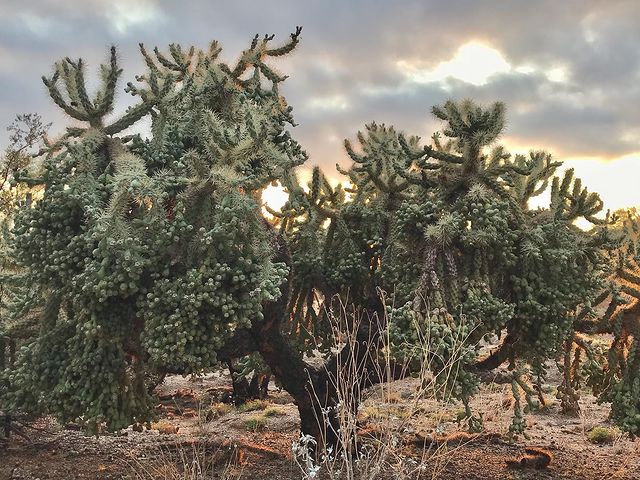
Scientific Name: Cylindropuntia Fulgida
Common Names: Jumping Cholla, Hanging Chain Cholla, Chain Fruit Cholla, Silver Cholla, Choya
Although all cacti could be dangerous because their spines easily penetrate the skin, one species is particularly annoying! Yes, we are talking about jumping cacti here!
What is Jumping cholla?
This perennial shrub is a part of the Cylindropuntia genus, which includes about 20 species of cactus. The genus is better known as Cholla cacti, and Jumping cholla cactus is its biggest and the most famous representative.
Why is it named Jumping cholla?
By observing Chain fruit cholla’s appearance and “behavior”, it is quite easy to see why this is the case. At the top and on the sides of the trunk of the mature cactus are a large number of oblong joints and long chains of cholla, giving this cactus a tree-like shape.
An untrained eye looking from a distance would probably take these semi-dangerous cacti for some “ordinary” and “peaceful” plants. But they are anything but.
Jumping cholla origin and habitat
Jumping chollas are native to North and South America but mainly to a region that includes the Southwestern United States of America and Northern Mexico.
Anyone interested in seeing this unusual plant in person can do so by visiting Arizona Sonora Desert Museum or Saguaro National Park West in Arizona.
In the desert areas, which are their natural habitat, these cacti grow from 6 to 15 feet high and 8 feet wide.
Although they certainly will not reach these dimensions when grown outside of those regions, you should still keep this information in mind if you plan to grow them in your garden.
RELATED: Ten Extraordinary Types of Tall Cactus Can Revive Your Yards and Landscapes
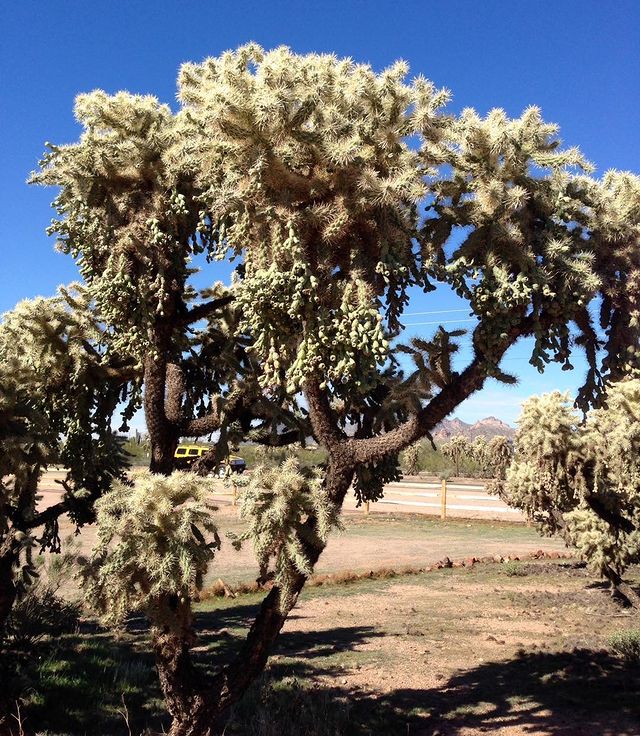
Does Jumping cholla actually jump at you?
Caution is advised when dealing with any cactus as no one wants to get pricked by its spines, but Chain fruit cholla is even more notorious when it comes to this.
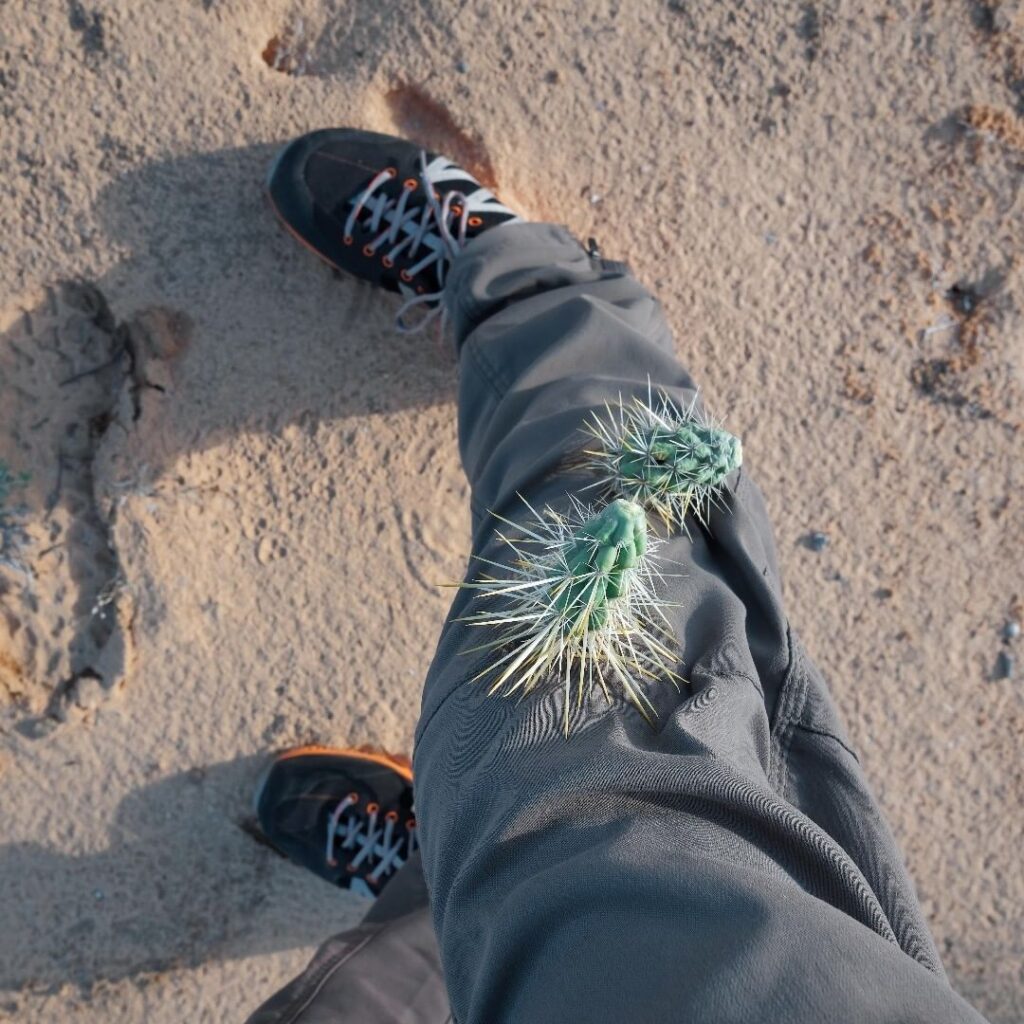
The reason for this and the fact that Cylindropuntia Fulgida is much better known as Jumping Cholla cactus are its light green stems armed with barbed spines that easily detach and “jump” on intruders.
A popular belief that is not true but persists to this day is that those stems jump on passing people and desert animals.
What is true is that the cactus’ stem will break off on the slightest touch and, by its spines, attach itself to whatever brushes up against the main plant, which gives the illusion of a jump.
Therefore, if you decide to grow jumping chollas or if you get to see them in their surroundings, act accordingly as too much love will, well, not kill, but definitely hurt you.
Detached stems – defense and reproduction
The detached stems with spines do not serve just as a defense mechanism but also as reproducing potential.
When they fall to the ground, the dead stems will sometimes take root, giving rise to new plants. In the desert, it is common to see a small “forest” of Chain fruit cholla cactuses as a result of their contact with the ground.
Why is Cylindropuntia Fulgida so shiny?
Even though this cactus’ common name draws more attention and does so for obvious reasons, the meaning of the second part of its scientific name – fulgida, gives us yet another exciting tidbit about it.
Fulgida, which means shining or glistening, was given in reference to the silverish, papery sheaths which cover the spines. The sheaths, used by the plant to protect itself from overheating, reflect the sunlight making it look like the cactus is glowing.
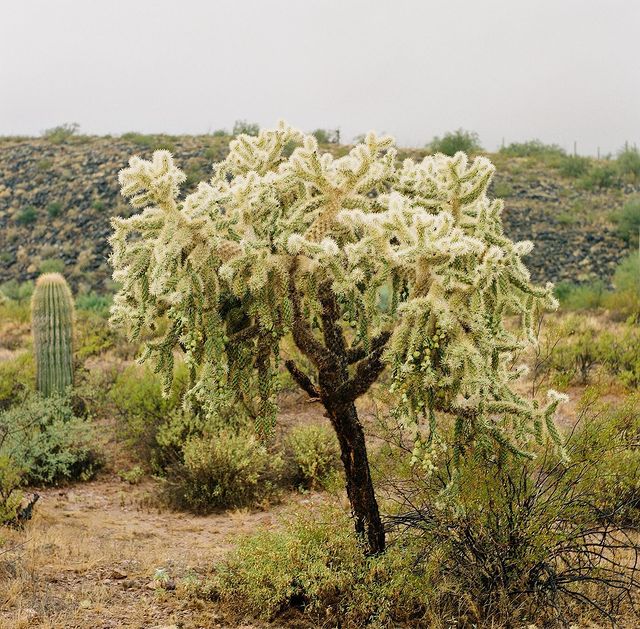
If you want to learn more about this clingy plant, check out the video below.
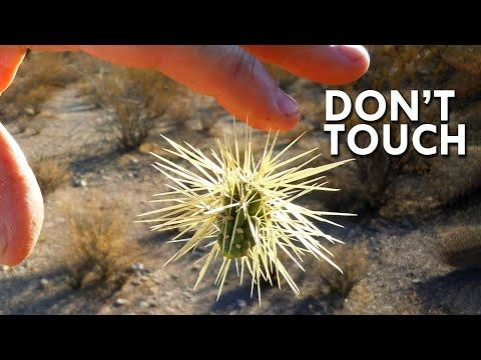
RELATED: Best Ways to Propagate New Succulents from Leaves and Cuttings
Jumping Cholla Flower
Another interesting thing about this cactus is that it blooms from spring to mid-summer.
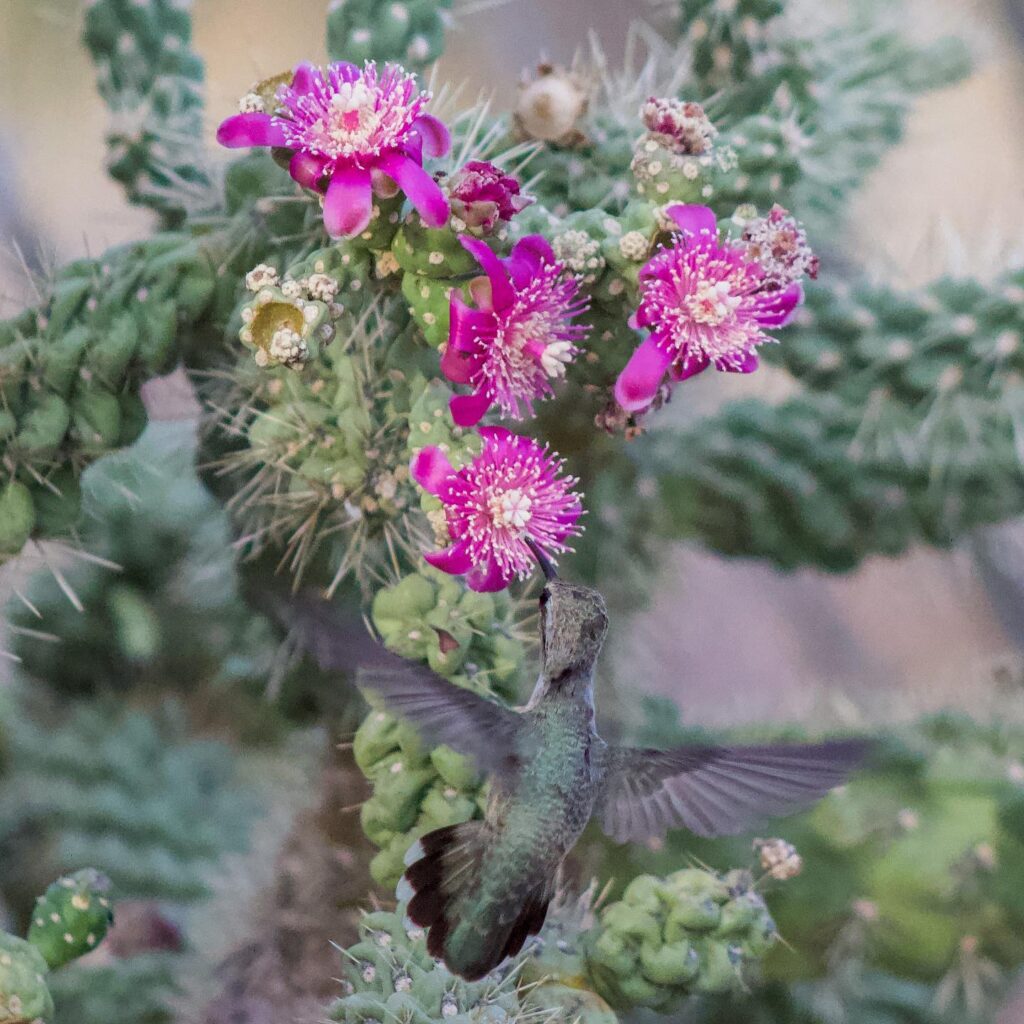
Small flowers that appear on the plant’s joint tips have tiny petals, usually found in warm colors like greenish-yellow, pink, lavender, and orange.
Jumping Cholla Fruit
After it is done producing flowers, the jumping cactus will start to develop green, pear-shaped cholla fruit. Since new fruits grow out of old ones, they form hanging chains giving this plant the Chain fruit cholla nickname. These long chains consist of one-and-a-half-inch long fruits whose inside can be eaten even if not boiled.
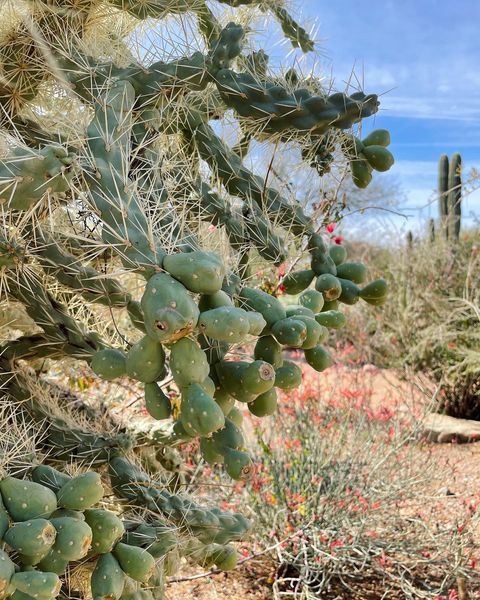
Desert cattle and other animals are the most frequent consumers of these sweet-tasting fruits, especially during long droughts.
How To Grow Jumping Cholla Cactus
Although they are not hard to maintain, there are still rules that should be followed. But as is the case with all cacti and other succulents, less is more.
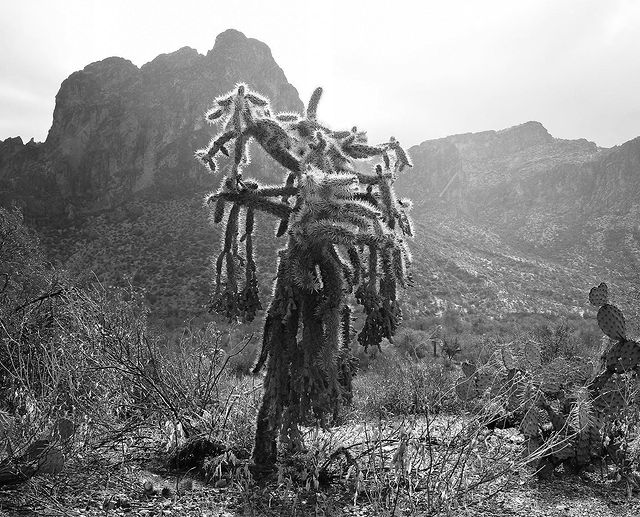
The aforementioned barbed spines are this plant’s best defense against animals and humans and will “attack” anyone, regardless of the person’s best intentions.
Therefore, when planting, pruning, or moving them to a new location in your garden, please wear gloves to prevent any harm to your bare skin.
Watering Jumping Cactus
Although the prevailing opinion is that the Jumping cholla cactus, like all succulents, should almost never be watered, this is not true. Jumping chollas, especially mature plants, do not mind being neglected, but they don’t forgive complete ignorance.
You should only water these succulents when the soil is completely dry. It is enough to water them only once a month in winter and summer a little more often.
Excessive watering of jumping cholla cactus can lead to root rot, to which these plants are highly susceptible, which you certainly do not want to happen.
Light
Since the desert is their natural habitat, it is easy to see why jumping chollas thrive in places with lots of direct sunlight. 6 to 7 hours will be enough to ensure maximum growth of these odd-looking cacti.
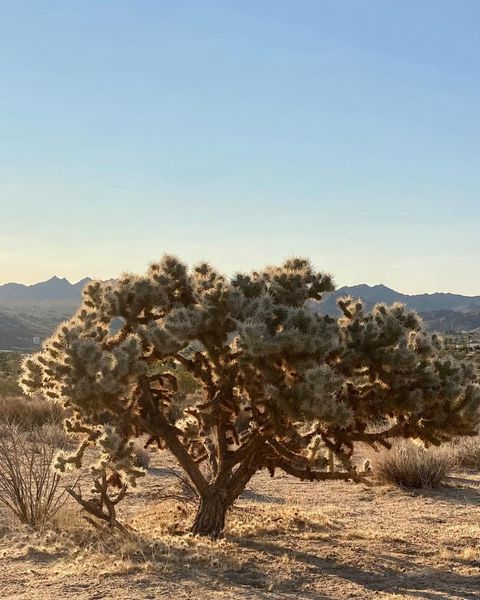
It can survive a little less light, but it will not give flowers or fruits in such an environment, and both are part of its desert charm.
Temperature
Whenever we take a plant outside its natural surroundings and grow it in our gardens and backyards, we try to simulate those conditions to get the best results possible.
Hence, for these freaks of nature, a warm temperature of 70 F will allow them to flourish and resemble their cousins from the desert regions of East and Northern California in the United States and Baja California in Mexico as much as possible.
But you should know that Jumping cholla is a hardy plant and will tolerate temperatures as low as -5 F.
Soil
As cholla cacti are inhabitants of waterless and barren places, they do not prefer a particularly fertile ground, which makes sandy soil an excellent choice.
Permeable soil allows the excess water to flow down and out, allowing the ground beneath them to dry quickly.
This soil is especially important for this type of cactus because, as already mentioned, root rot is a common problem with the cholla cactus.
Fertilizing
Proper nutrition is essential for all types of plants, including cholla cactuses. Although they do not require fertile soil, nourishing them every once in a while is a good practice but not a one you should feel obligated to do as these exotic plants really are low-maintenance species.
If you plan on using fertilizer, do not apply the universal one for houseplants, but a special cacti fertilizer as they need different ratios of nutrients.
Propagation
Although jumping cholla cactus can be grown from seed, propagation through stem cuttings is preferred as it delivers faster results. Besides that, it is quite simple, and if you follow the next few steps, you will be able to do it yourself in no time:
- Before you start working, protect your skin from the cactus’ sharp spines with some thick gloves.
- Use a sterilized scalpel or knife to take a cutting from a healthy, mature plant. The slit must be clean, without many “cuts,” which will allow the plant to heal as soon as possible and prevent the spread of infections. When removing the stem cuttings from the parent plant, care should be taken that the cut part is strong and large enough to survive the time needed to develop its own root.
- Leave the cuttings for a few days, at most a week, for the wound to dry. During this period, the cuttings should be kept in a warm place but not exposed to direct sunlight.
- After a few days, the cuttings are ready for planting. Cholla cactus cuttings are planted in sandy cactus soil with the cut edge facing the ground.
- After 20 to 30 days, the cuttings will start developing roots, at which point you can water them. Similar to their adult versions, young plants are not too fond of soaked soil and should be watered just enough not to let the soil dry out completely.
Teddy Bear Cactus (Cylindropuntia Bigelovii)
Teddy bear cactus or Teddy bear cholla is another species from the Cylindropuntia genus that is also sometimes referred to as Jumping cholla or cactus.
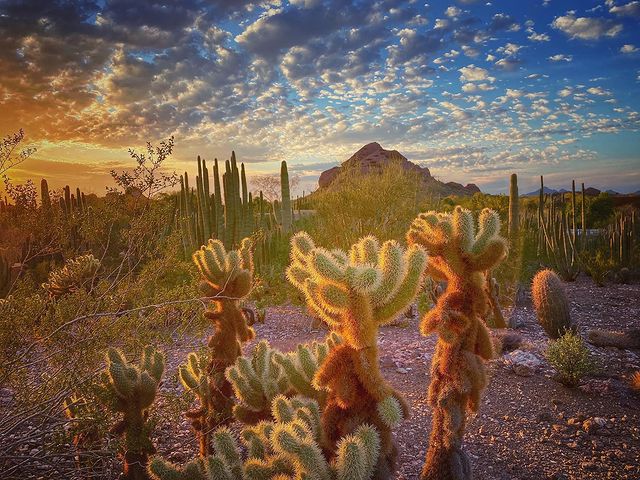
Teddy bear cholla is much smaller compared to its more famous cousin, reaching three to eight feet in height and width. While not the same plant, Jumping cholla and Teddy bear cholla share the same trait: detaching the stems upon any contact and latching with barbed spines onto anything or anyone who dares to attack the plant.
These two peculiar cacti have something else in common: they both look harmless from a distance. The furry and soft appearance of the spiny stems located on both sides of the trunk gives the impression of a cute, little bear spreading arms earning this cactus its popular name, Teddy bear cholla.
Frequently Asked Questions
Are glochids poisonous?
No. Glochids are the barbed spines that various species of the Cylindropuntia genus possess. Besides cholla cacti, prickly pear is the only cactus with this type of spines. Although irritating, glochids are not poisonous but can cause bruising and bleeding if they penetrate deep enough. Also, if not treated in time, open wounds caused by the spines can lead to infections.

Is jumping cactus painful?
Yes. Getting pricked by any cactus is already an unpleasant experience, but dealing with jumping cholla’s microscopic barbs that will get under your skin, literally, is a specially painful and annoying affair. A large tooth comb or a pair of tweezers will be your best friend in case you get stung.
Now that you know about jumping cactus, make sure to check out our other articles:
8 Useful Varieties of Pink Cactus for Indoors and Outdoors
30 Vibrant Types of Red Succulents for Indoor and Outdoor Gardens







